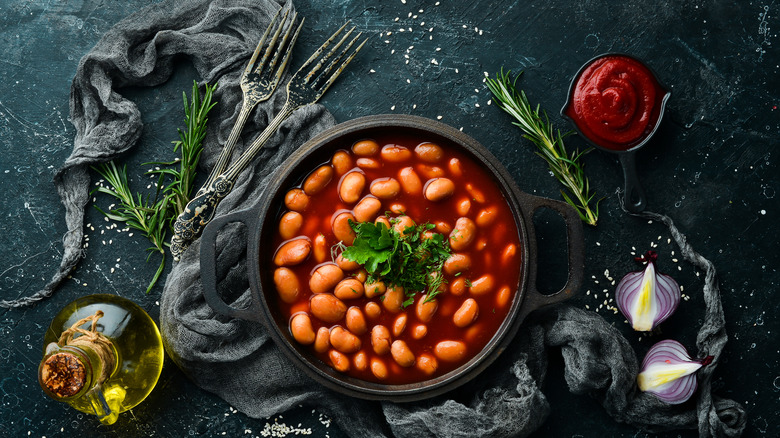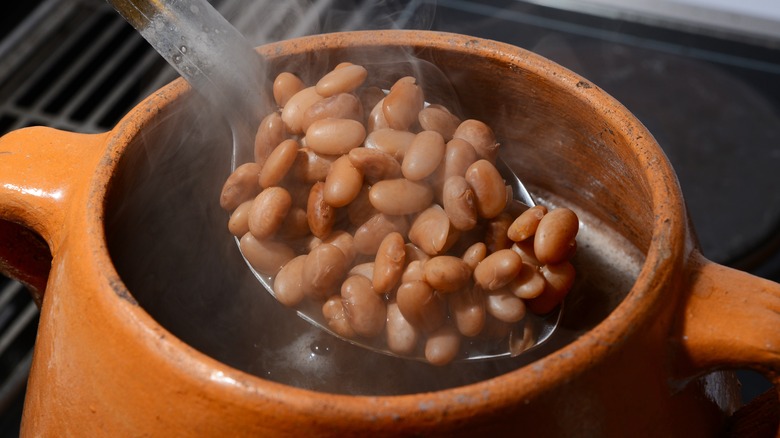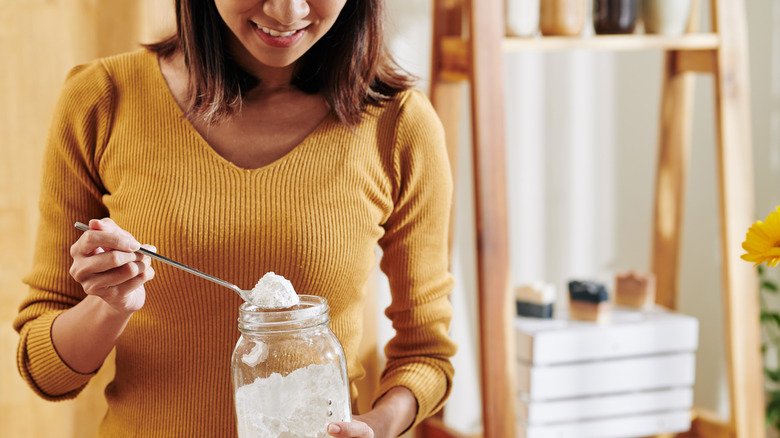Baking Soda Is Key To Creamier Dried Beans
There are many reasons you may be looking to incorporate more beans into your regular meal rotation. Not only are they an important protein source, but they're also incredibly nutrient-dense, according to the American Society for Nutrition, containing high levels of important micronutrients like potassium, magnesium, folate, iron, and zinc. And, in a world full of record high-priced groceries, beans — especially the dried variety — are consistently less expensive when compared to fresh proteins like meat, making them an even more desirable addition to your grocery list.
If you are interested in building more beans into your diet that are creamy, delicious, and even less likely to make you gassy — we all know it's true — brining or cooking them in a bit of baking soda is a one-step method to accomplish just that. So no, you technically don't need to soak your beans. But incorporating baking soda at some point in your bean-cooking timeline will improve the texture and overall experience of your final results every time.
How baking soda betters your beans
The science behind baking soda providing creamier beans comes down to its ability to expedite pectin breakdown. What is pectin? A carbohydrate polymer that can be found in a plant cell's lamella, the part that is responsible for reinforcing its overall structure. Thanks to their high levels of pectin, dried beans — just like potatoes, yams, and many other raw plant foods we frequently eat — are incredibly firm in texture. With such hard and impermeable exteriors, tossing dried beans into plain water and expecting them to take on the moisture needed to soften and cook through, ideally at the same time, might be too much to ask.
But, by adding baking soda (aka sodium bicarbonate) to the water, it helps to soften beans in two different ways, before the power of a good long simmer even comes into the equation. Baking soda increases sodium levels in the cooking water while also alkalizing it. The added sodium displaces the calcium and magnesium ions that make pectin strong, while the alkalinity of the water works to break pectin into smaller, more malleable molecules.
Once cooking water starts simmering, it can more easily penetrate the surface of the dried beans and fully cook them in a fraction of the time. Baking soda essentially levels the playing field in your pot, allowing beans to take on the moisture they need more uniformly, softening and expanding as they cook without bursting open or leaving you with an inconsistent finished product.
When to add baking soda and how much to use
There are two ways you can reap the benefits of baking soda when cooking dried beans. One is giving them a few hours to brine in baking soda and water, rinsing, and then boiling them in fresh water. Another is by adding a small amount of baking soda to a pot of water and beans and starting the cooking process straight away. While there's consensus that the ingredient improves the texture and reduces the cooking time of beans — potentially cutting it in half — preference on when specifically you add it varies based on where you fall in the larger bean soaking debate. Whichever approach you take, using baking soda will make cooking dried beans a more delicious, less time-consuming part of your life.
But be careful with how much you add, though — more baking soda doesn't mean more creamy goodness. For one cup of dried beans, a good pinch is enough to yield the luscious results you're after. By adding too much, you risk imparting an unpleasant taste to the beans. And with all the energy you've put into preparing them, you don't want to risk it — less is more here. With these tips you can avoid the huge mistakes you're probably making with canned beans and choose this easy approach to creamy beans every time.



